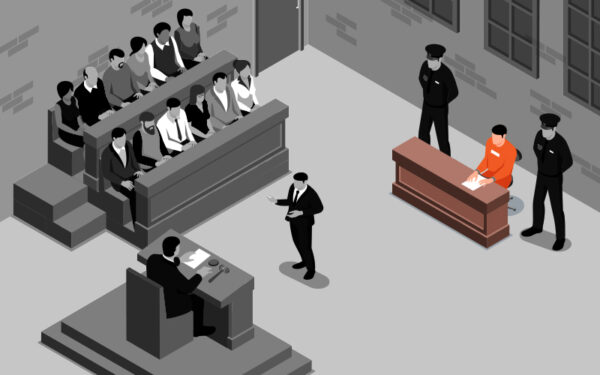April 5, 2024: A few days ago, Crypto Sleuths were alerted about a transfer of 0.001 Bitcoins (BTC). The transaction amount was fairly low, but what caught their attention was the name of this website- ‘Silk Road’- notorious for being the world’s first black market site accessible on the darknet.
Soon enough, another transfer of 30,174 BTCs associated with the Silk Road website to Coinbase Prime Address was carried out and experts found the transactions linked to the United States Department of Justice (DoJ). The US DoJ moved BTCs worth a staggering 2.1 Billion $ US which was stolen by a hacker from the Silk Road website in 2012.

The news made ripples in the crypto industry even as the BTC value plummeted to 65,000 $US from 70,000 $US recently.
More than a decade after the website was shut down by US law enforcement agencies and its founder Ross Ulbricht jailed for life, the phoenix of Silk Road keeps popping up, making ripples in the crypto industry.
In this report, we shed light on the genesis and journey of Silk Road, the subsequent arrests and trials and the crypto money trail which the agencies are following even after 11 years.
Part 1: Genesis of Silk Road
Silk Road website was founded in 2011 by Ross Ulbricht, a former physics graduate from Texas, who held libertarian views and advocated for minimal or zero government regulation in trading. Ross’ website could be accessed only through The Onion Ring (TOR) browser where users could trade in BTC thereby providing them complete anonymity by shielding IP addresses of their devices and their payment details. Ulbricht took the pseudonym ‘the Dread Pirate Roberts’ as the founder of Silk Road.

The name Silk Road was taken from the ancient Silk Road route between Eastern Africa and Southern Europe to Central and East Asia , which was used historically by traders to purchase silk, whose production technique was a secret kept hidden by China.
Soon enough, Ulbricht’s website Silk Road started gaining notoriety for being a marketplace for contraband substances such as drugs, counterfeit currencies, fake identification documents and other criminal activities such as weapon sale, murder for hire, human trafficking and flesh trade. Users on this platform could register themselves and then connect with potential sellers who would demand their payment in BTCs in exchange for contraband items or other criminal endeavors. Customers could now get drugs delivered at their doorsteps using courier service after payment was initiated.
According to US law enforcement agencies, between February 2011 to July 2013, sales amounting to over 9.5 million BTCs were facilitated on the website. Over 100000 customers had traded on the platform and 183 million $US was generated in sales. Ulbricht’s website made a commission of 6,14,305 BTCs.
Part 2: The party comes crashing
Even as the Silk Road website continued to soar high in popularity, law enforcement agencies had already started investigating the platform over various criminal charges. As they started collecting evidence, it became clear to them that the drug kingpin behind Silk Road was none other than 29-year-old Ross Ulbricht, who was operating from obscure locations in San Francisco, USA.

The authorities zeroed upon Ulbricht after an FBI agent found a user codenamed “Altoid” promoting the website Silk Road on different internet forums as early as 2011. Ulbricht had made a major goof up at one of the forums wherein he left his personal email address while seeking a computer programmer to develop his website back in 2011.

On October 1, 2013, the Federal Bureau of Investigation (FBI) officers arrested Ulbricht from a public library in San Francisco along with his laptop which had incriminating details of him running the website under the pseudonym of “Frosty”. The website was shut down by the FBI and all the proceeds of BTCs were seized.
Soon after the website was shut down, another black market site Silk Road 2.0 was hosted on the TOR browser which was again shut down by agencies and its founder Blake Benthall was arrested.
Ulbricht was charged with running a criminal enterprise, drug distribution and four other conspiracy charges related to money laundering, computer hacking, fake id documents and narcotics. Authorities also charged him for attempting to commission atleast five murders through his website, however, the charges couldn’t be proved as the murders did not take place. Finally, Ulbricht was convicted on the charges and given two back to back life sentences in a trial which was conducted on February 4, 2015.

As FBI and Homeland security of US tied hands with Europol and other agencies in UK and Germany, the noose started getting tightened around other “moderators” and programmers associated with Silk Road. According to agencies, a total of 143 arrests have been made till date in the Silk Road case.
Part 3: The Money Trail
By October 2013, the FBI had seized in total 1,44,000 BTCs from the Silk Road valued at 28.5 million $US at that time. In 2015, the US Marshal Service auctioned 29,657 BTCs which were seized from the website.
However, there was no trace of big chunks of BTCs that went missing from the scrutiny of agencies as the website was shut down.
By 2014, US started auctioning BTCs seized from the Silk Road website which they had seized. In the words of Kelly R Jackson, the Internal Revenue Service Criminal Investigation (IRS-CI) officer who investigated the case, “criminal proceeds should not remain in the hands of thieves.”
However, Kelly and US enforcement officers seem to be way behind the money trail.
Part 4: Hacker caught after 10 years
In November 2020, US authorities forfeited 69,370 BTCs which were allegedly stolen by an unknown hacker from the server of Silk Road between 2011 to 2023. The value of the seizure at that time was around 1 billion $US.
In November 2021, US law enforcement officers arrested 28-year-old James Zhong from Gainesville town in Georgia, USA, for stealing over 50,000 BTCs from the Silk Road website. According to officers, Zhong had allegedly hacked into the website and siphoned over 50,000 BTCs in 2012. At the time of his arrest, authorities seized 50,676 BTCs from his residence in Gainesville worth over 3.4 billion $US. This is the second biggest seizure of cryptocurrency by US authorities.

Zhong was hardly 18 years old when he orchestrated the grand scam by finding a loophole in the server of the Silk Road website and siphoning the digital money. According to investigators, it was the lavish lifestyle of Zhong, who had no visible source of income, that alerted the authorities and initiated a probe against him. What really led to his arrest was a 911 call made by Zhong where he reported a house break-in and theft of several thousand dollars worth of cash as well as bitcoins saved in his devices.

Part 5: The Auction
The U.S. government has conducted multiple auctions to sell off Bitcoins seized from Silk Road investigations. Reportedly, 29,656 Bitcoins were sold to venture capitalist Tim Draper, a big portion of Bitcoins associated with the Silk Road.
Additionally, The U.S. Marshals Service held an auction to sell 50,000 Bitcoins. These Bitcoins, worth about $18.5 million at the time of the auction, were taken during the case against Ross William Ulbricht, the founder of Silk Road.
In March 2023, the government sold 9,861.17 Bitcoin for almost $216 million, part of the 50,000 BTC seized in November following an individual’s arrest connected to the Silk Road.
As per the reports, the U.S. government plans to sell the remaining 41,490 BTC in four tranches in the same year. Experts believe that the US DoJ had transferred BTCs worth 2.1 billion $US for the same intent and in the coming days, we will witness many more such auctions. However, the big question regarding the whereabouts of the remaining generated BTCs on Silk Road still remains a mystery.






